Saturday morning, October 11, an early morning phone call from garden club pal Connie Hoge. Would I like to come along on a jaunt to Frederick, camera in hand, to document part of a project her Landscape Architecture cohort at UMD College Park is involved in. Sure, why not. It’s a great day to hike around.
Connie’s project comes out of the UMD the National Center for Smart Growth–an initiative with the acronym “PALS” (Partnership for Action Learning in Sustainability). In this case, her second year Design Studio group will be working with the City of Frederick, developing a conceptual plan for a shared use transportation corridor (bikes and pedestrians) incorporating sustainable practices. The area involved is in a flood plain along Carroll Creek in Frederick which stretches from the Monocacy River to the vicinity where East Church Street and Highland Street intersect. The challenge is to create a new recreational use area for the citizenry while creating and restoring this riparian area with native plants.
We began at the Wrenn farm, asking permission to tramp their property. The Wrenn’s own the acreage through which this plan is to take shape. A road/track called (appropriately) “Farm Lane” took us back, close to Carroll Creek. We walked amidst the cornfield stubble taking pictures and notes of the lay of the land and the relationship between the parts. Carroll Creek has sandbars and splits here and there in this section, so we documented the waterways and the banks. We were also noticing native plants, many invasive species, birds and deer. All of this information will be used as Connie draws up various schematics of what is there–plus the challenges to overcome and which natural features that might be assets as plans are drawn up.
At the second phase of this venture, we drove over to Highland Street, next to the Frederick Fairgrounds and walked down near the bridge overpass section of the Creek. Across the street is where Carroll Creek becomes the “Linear Park” waterway inside the developed city. We saw herons flying and lots of tall shrubs (many red berried honeysuckles), plus evidence of a few homeless camp sites.
Click to enlarge photos.
- Carroll Creek flood plain in Wrenn property
- Parking by Farm Lane
- Into the cornfields
- Carroll Creek
- Gigantic old Osage
- Connie collects some Osage fruit
- We saw raptors and sparrows mostly
- Going down on the far creek side near fairgrounds
- These honeysuckle shrubs were everywhere
Afterwards, we stopped in Frederick and had lunch at a place that brews its own beer. Outside, we were entertained by a parade of “Walk A Mile In Her Shoes” groups where men were wearing all sorts of impossible high heels to raise money and support education about gender violence issues. We also had a great time nabbing acorn specimens from some of the stately trees and admiring the container plantings Frederick does so well.
We decided to stop by Rose Hill Manor Museum and Children’s Park to investigate what they had to offer and pick up pamphlets. We were the only people on the grounds at the time. Rose Hill was built in the 1790’s for Thomas Johnson, first governor of Maryland. It has scenic stone walls and huge trees, plus several large areas of flower beds behind the house, including roses of course. There are many out buildings, but as we were not there for a tour, we did not venture beyond the main room of the manor. The woman who greeted us let us know of the great difficulty they have with getting any garden clubs to volunteer their time to assist at Rose Hill. She never hears back.
- This portico is a major design feature of Rose Hill
- View of the side
- Topiary and stone walls
- One of the garden beds with perennials
En route home, we drove off the track to see the LehIgh Cement Works tree plantings Connie had installed. The backroads to that area are very scenic. Then, we took a road less traveled back in the Stone Chapel Rd area and back by Joan Mann’s old place. The hydrangeas by the road were gloriously in color and the woods were full of yellow leaves of spicebush. I saw my first native persimmon loaded with fruit along Rt. 31. It was definitely a full day.
- Persimmon tree
- Persimmon fruit close up
- Hydrangea by Joan Mann’s former home
- Woods near Stone Chapel
- Lots of spicebush (Lindera)




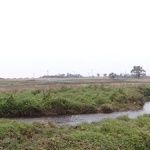
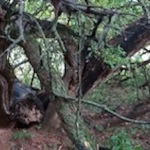




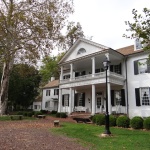

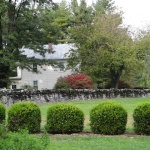
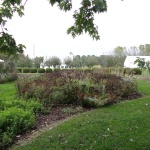
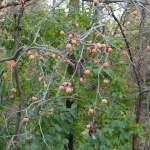
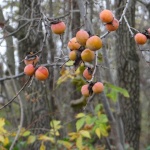

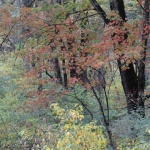
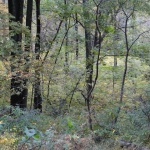


1 comment for “A day with Landscape Architecture student–Connie Hoge”